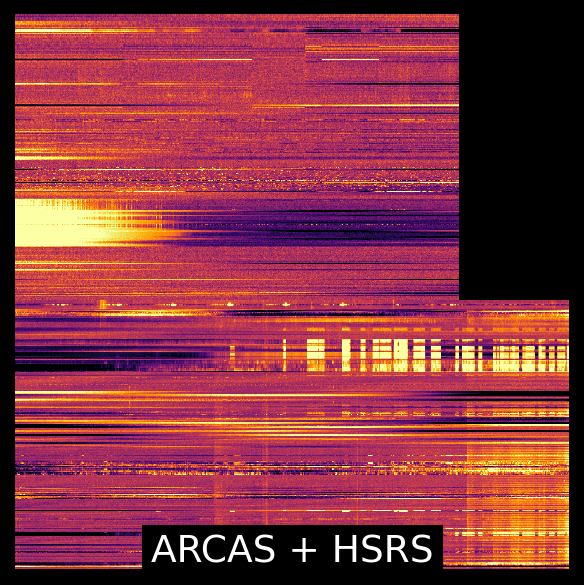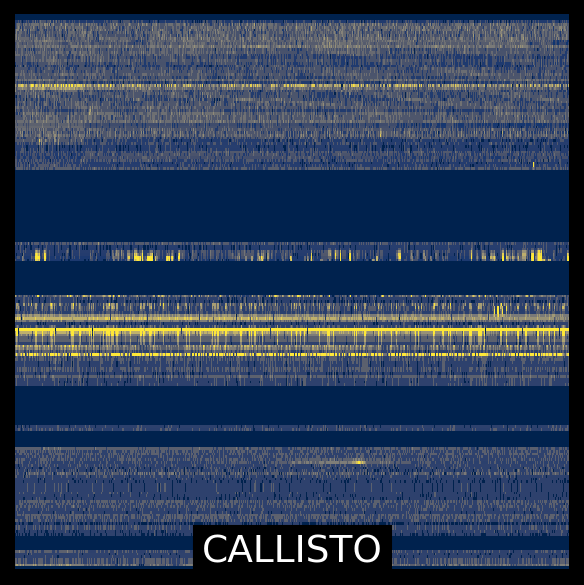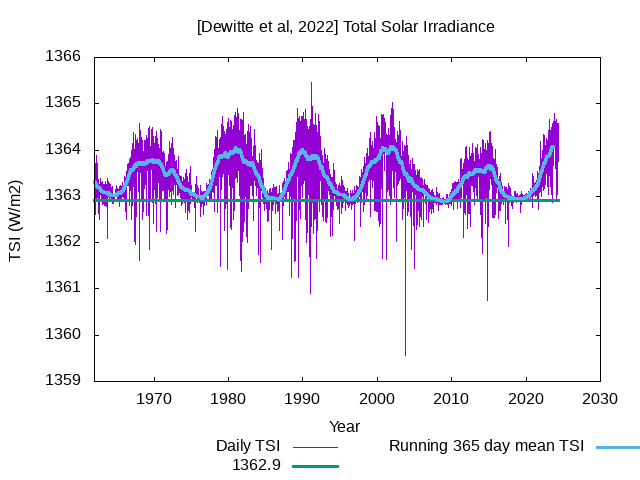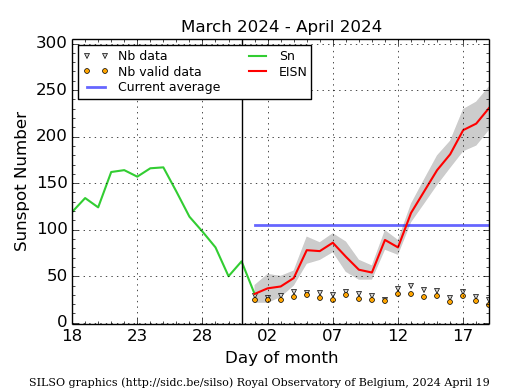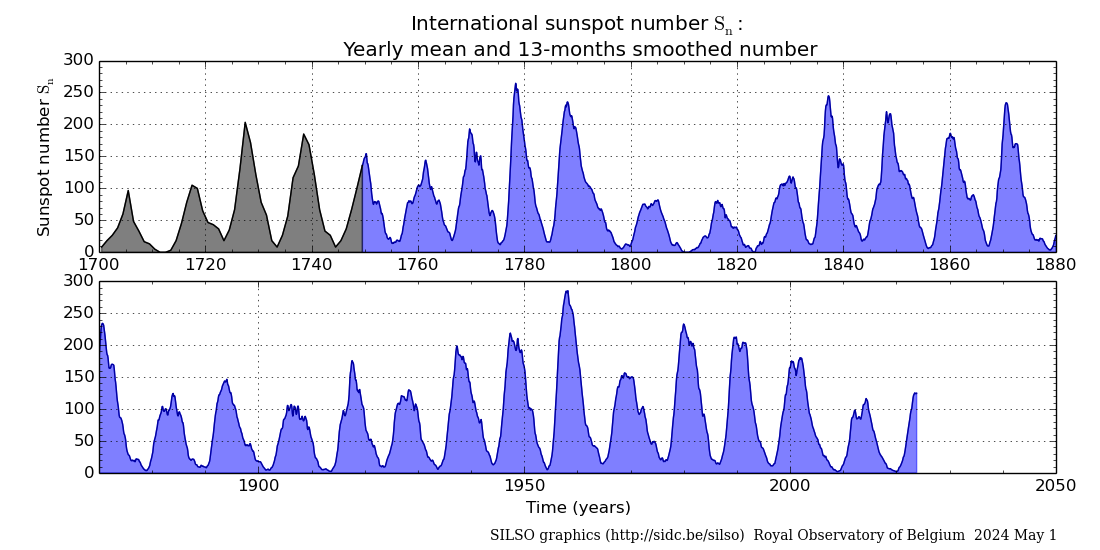Solar flaring activity was at moderate level, with multiple C-class flares and three M-class flares recorded in the past 24 hours. The largest flare of the period was an M2.1 flare, peaking at 04:53 UTC on Apr 19, associated with NOAA AR 3647 (beta-delta class). This region was the main driver of the flaring activity observed over the past 24 hours together with NOAA AR 3645 (beta class). Low flaring activity was also produced by NOAA AR 3635 (beta class) and NOAA AR 3639 (beta-gamma class). Other regions on the disc have simple configuration of their photospheric magnetic field (alpha and beta) and did not show any significant flaring activity. The solar flaring activity is expected to be at moderate levels over the next 24 hours, with M-class flares possible and a chance for X-class flare.
Multiple CMEs, directed towards south-east from the Earth's perspective, were observed in SOHO/LASCO-C2 starting from approximately 17:16 on Apr 17, likely related to the flaring activity from NOAA AR 3638 and 3643. While bulk of the CME is off the Sun-Earth line, a glancing blow from these CMEs could be possible on Apr 21 - 22, although with low confidence.
Over the past 24 hours the greater than 10 MeV GOES proton flux was at nominal levels and is expected to remain so with
possible enhancements in case of increased levels of solar activity over the next days.
The greater than 2 MeV electron flux, as measured by the GOES-16 satellite, remained below the 1000 pfu threshold. It is
expected to remain below the threshold during the next 24 hours. The 24 hour electron fluence was at normal levels and is expected to remain at these levels for the following 24 hours.

